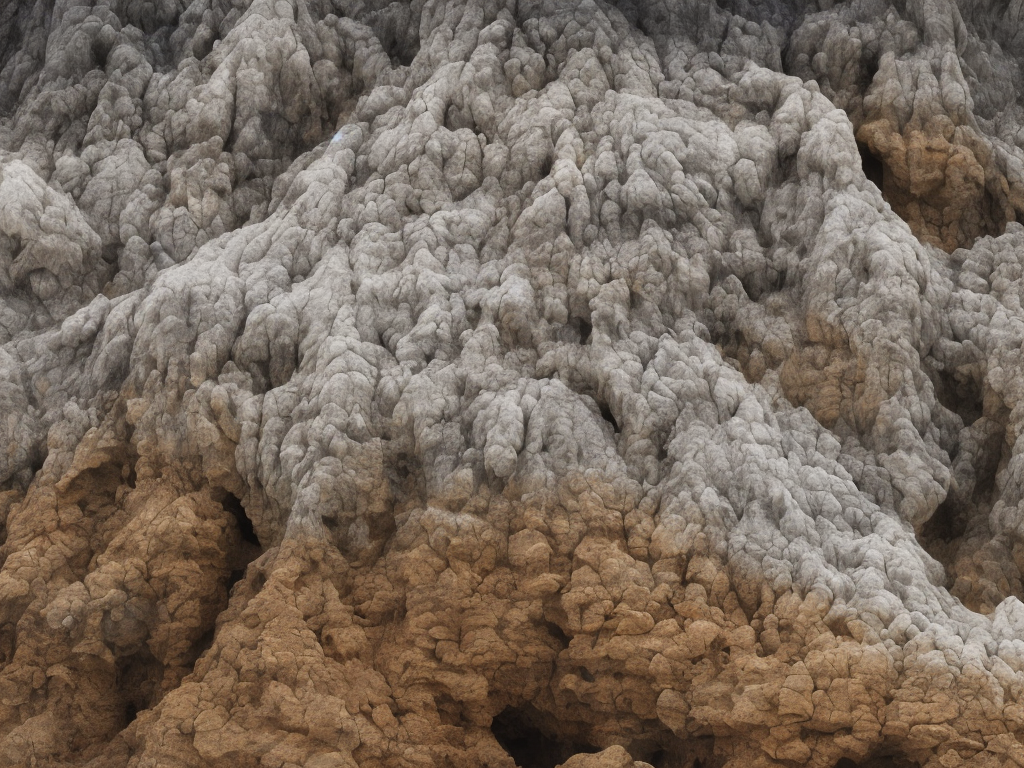
Difference Between Weathering And Erosion
When we look out into the world, we often see beautiful landscapes created by the forces of nature. Jagged mountains, sweeping valleys, and rocky coastlines all showcase the remarkable power of nature to shape the Earth's surface. Two processes that contribute significantly to the creation of such landscapes are weathering and erosion. While these terms are often used interchangeably, they are distinct processes with different effects on the environment. In this article, we will explore the difference between weathering and erosion.
Weathering and erosion are both geological processes that involve the breaking down and transportation of materials on the Earth's surface. However, they differ in terms of their mechanisms, agents, and impacts.
Weathering is the process of breaking down rocks and minerals into smaller fragments or altering their chemical composition due to exposure to various forces and conditions at or near the Earth's surface. It is a slow and gradual process that occurs over a long period of time. Weathering can be classified into two primary types: mechanical weathering and chemical weathering.
Mechanical weathering, also known as physical weathering, occurs when rocks and minerals are broken into smaller pieces without any change in their chemical composition. This process can be further divided into various types, including frost wedging, exfoliation, and biological weathering.
Frost wedging is a common type of mechanical weathering that occurs in cold climates. Water seeps into the cracks of rocks, and when it freezes, it expands, causing the cracks to widen. Over time, this repeated freezing and thawing can fragment rocks and create crevices and fractures.
Exfoliation is the process of rocks breaking into layers or sheets due to the release of pressure. As overlying material is eroded or removed, the underlying rocks expand and crack in response to the decrease in pressure. This process is commonly associated with igneous rocks, especially those formed deep within the Earth's crust.
Biological weathering is another type of mechanical weathering in which living organisms contribute to the breakdown of rocks. Plant roots, for example, can grow into cracks and crevices, causing rocks to fragment as the roots expand. Animals such as burrowing rodents and insects can also accelerate rock breakdown by physically breaking them apart.
On the other hand, chemical weathering involves the transformation of rocks and minerals through chemical reactions. These reactions occur when certain minerals come into contact with water, oxygen, carbon dioxide, or acids. Chemical weathering can result in the formation of new substances or the dissolution of minerals, leading to the alteration of rock structures.
One of the most common forms of chemical weathering is known as oxidation, which occurs when iron-bearing minerals react with oxygen in the presence of water. This process results in rust or reddish-brown discoloration of rocks and minerals. Carbonation, another form of chemical weathering, takes place when carbon dioxide dissolves in rainwater and forms a weak acid called carbonic acid. This acid can react with calcium carbonate, causing rocks to dissolve slowly over time.
Unlike weathering, erosion refers to the removal and transportation of weathered materials by natural agents such as water, wind, ice, and gravity. It occurs when the force exerted by these agents is greater than the resistance of the weathered materials. Erosion is a dynamic process that continually reshapes the Earth's surface by wearing down mountains and cliffs, transporting sediments, and depositing them elsewhere.
Water erosion is the most significant form of erosion on Earth, and it occurs through various processes such as sheet erosion, rill erosion, gully erosion, and stream erosion. Sheet erosion happens when water flows evenly over a relatively flat surface, removing a thin layer of soil. Rill erosion occurs when small channels form as concentrated flow develops, carving shallow channels in the soil. Gully erosion takes place when rills become deep and wide, forming larger channels or gullies. Stream erosion is the transport of sediments by flowing water, contributing to the formation of valleys and canyons over time.
Wind erosion is another prominent form of erosion, often occurring in arid and semi-arid regions. It involves the movement of sediments, such as sand and dust, by the force of wind. Wind erosion can lead to the formation of sand dunes and the removal of fertile topsoil, causing significant damage to ecosystems and agricultural areas.
Glacial erosion occurs when the movement of glaciers reshapes the land by scraping and plucking rocks and soil. As glaciers advance, they erode the landscape by scraping the ground and pushing debris ahead of them. When glaciers retreat, they leave behind sediment deposits known as moraines.
Gravity erosion, also referred to as mass wasting or mass movement, occurs when gravity causes the downslope movement of materials. This can happen due to landslides, rockfalls, or the collapse of cliffs. Gravity erosion is particularly common in hilly or mountainous areas where slopes are steep.
In summary, weathering and erosion are two fundamental geological processes that work hand in hand to shape the Earth's surface. Weathering refers to the breakdown and alteration of rocks and minerals, whereas erosion involves the removal and transport of weathered materials. Weathering acts as a precursor to erosion, as it breaks down rocks into smaller particles that can be easily transported. Together, these processes contribute to the formation of diverse and stunning landscapes that we admire and appreciate.
 Self-Instruct
Self-Instruct